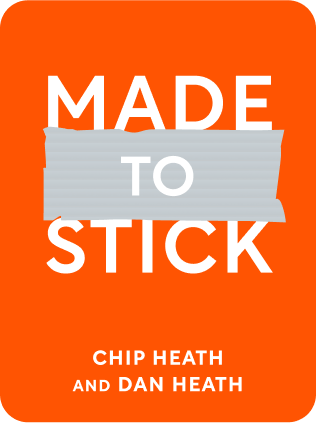

This article is an excerpt from the Shortform book guide to "Made to Stick" by Chip Heath and Dan Heath. Shortform has the world's best summaries and analyses of books you should be reading.
Like this article? Sign up for a free trial here .
What is the inverted pyramid? How can the inverted pyramid approach help you communicate your message more effectively?
Journalists use the inverted pyramid to prioritize the most important elements of a story. It keeps them from burying the lead. You can use this model to make sure the essence of your message gets communicated.
Keep reading to learn about the inverted pyramid.
A Tool for Prioritizing: The Inverted Pyramid
Journalism provides a model for how to find and convey what’s most important in a memorable way. It’s called the inverted pyramid. A reporter’s first sentence, or lead, contains the most important elements of the story. For example, here’s a 1995 Washington Post lead from a compilation by the American Society of Newspaper Editors:
“JERUSALEM, Nov. 4—A right-wing Jewish extremist shot and killed Prime Minister Yitzhak Rabin tonight as he departed a peace rally attended by more than 100,000 in Tel Aviv, throwing Israel’s government and the Middle East peace process into turmoil.”
News stories follow the inverted pyramid structure, presenting the facts in decreasing order of importance, with the most important at the top. It’s convenient for time-starved readers—they don’t have to read far to get the most important points. Also, stories can be shortened easily from the bottom. Supposedly, the inverted pyramid structure originated in the Civil War when stories were transmitted by telegraph—the connection could be lost at any moment, so reporters had to convey the most important information first.
Although reporters are trained to prioritize and distill information, they can still get lost in the details and have trouble finding the key point or essence of a story. Missing the key point is referred to as “burying the lead.”
When crafting your message, think about what you’d want to say first, if you had to worry about losing your line of communication any second.
‘It’s the Economy, Stupid’
Most politicians like to talk, but as a presidential candidate in 1992, Bill Clinton was particularly susceptible to losing focus. He loved delving into policy details, answering media questions at length, and generally holding forth on any topic. Struggling to keep Clinton and his campaign focused, his political adviser James Carville one day wrote several phrases on a whiteboard. One of them was, “It’s the Economy, Stupid,” which became a central idea of the Clinton campaign.
Carville said he added with word “stupid” as a barb to remind campaign staff to not get too full of themselves. Clinton was frustrated by the constraint because he wanted to delve into the balanced budget issue being pushed by third-party candidate Ross Perot. But Clinton’s advisers insisted he stick to one lead: the economy. Multiple messages would be tantamount to having no message or burying the lead.
When you want to make sure you communicate the most important elements of your message, the inverted pyramid can be your guide.

———End of Preview———
Like what you just read? Read the rest of the world's best book summary and analysis of Chip Heath and Dan Heath's "Made to Stick" at Shortform .
Here's what you'll find in our full Made to Stick summary :
- What makes some messages “stick” while others go unremembered
- The six criteria for shaping your message so it resonates
- Why many companies are blinded by “the curse of knowledge”






